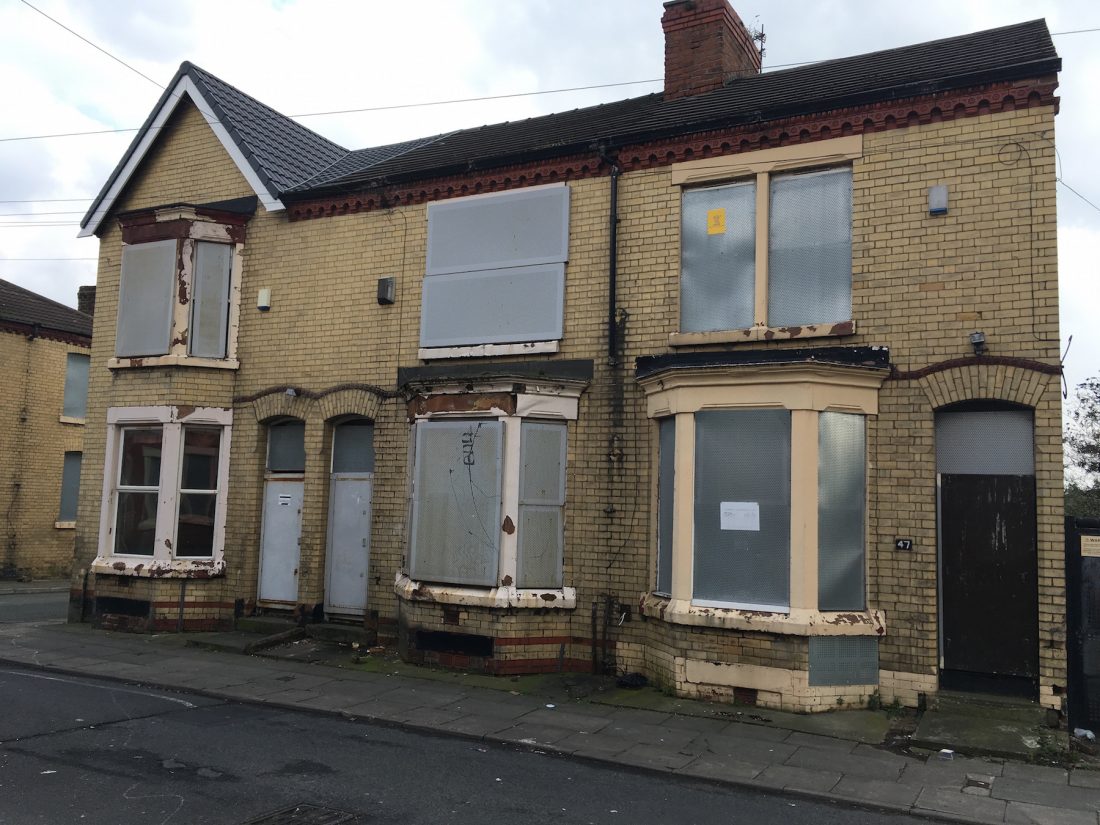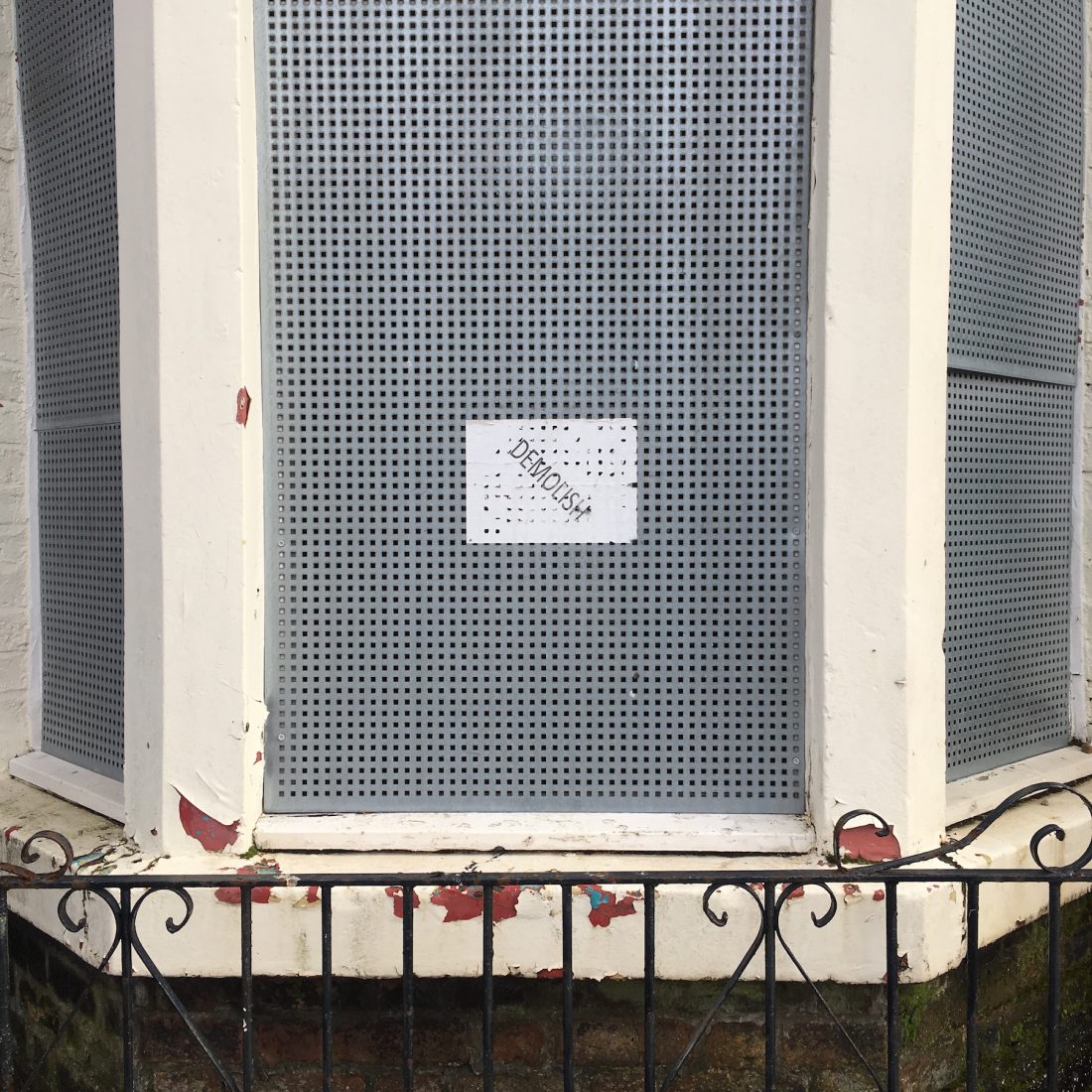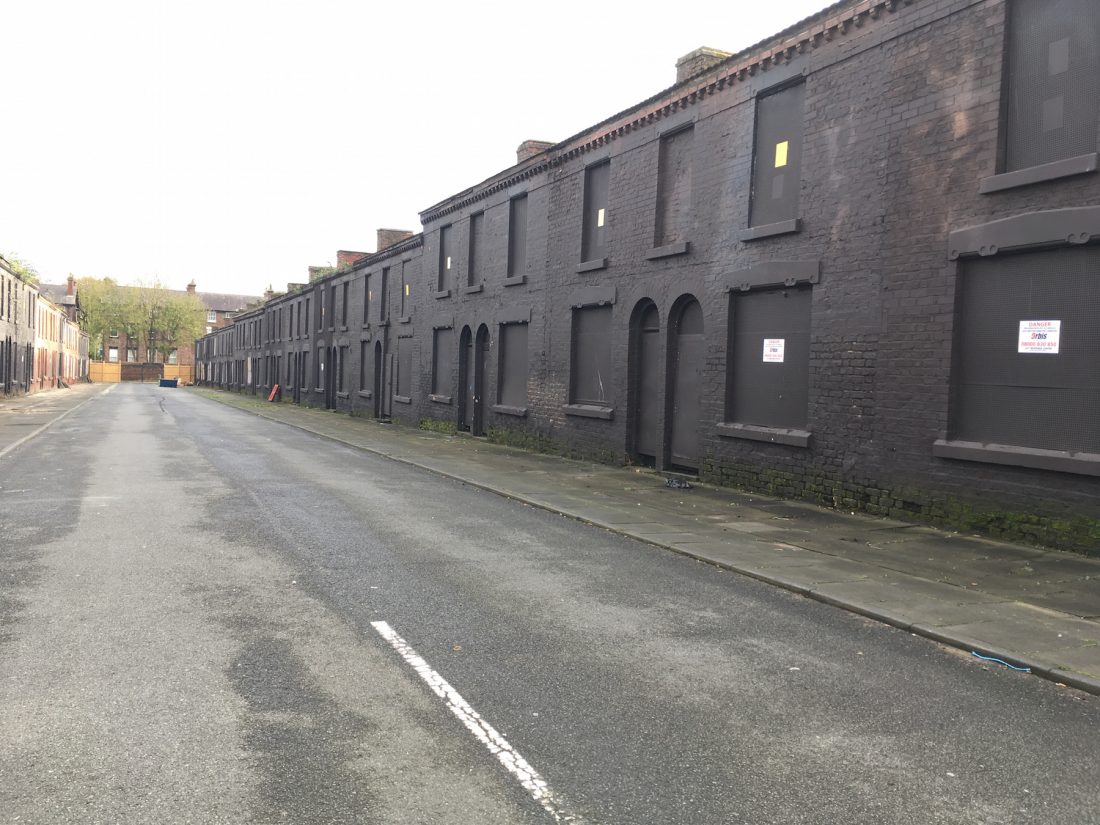As contrite as I felt about being the sort of artist who wanders around pondering Derrida, his idea of Hauntology was pretty inescapable here, especially in the dockside neighbourhoods of L8, in which the ideas of an active absence or deferred non-origin have never felt more prescient to me, nor has the Shakespeare quote Derrida seemed so fond of in which Hamlet said “the time is out of joint.” Liverpool’s population currently sits at half of what it was in the 1930’s, and that is immediately apparent in Toxteth, as is the phenomenal wealth of Liverpool at it’s peak, and the phenomenal levels of deprivation that prevailed once the wealth had fled. Tree lined boulevards contain the Georgian houses built for some of the richest people of their day, the slave trading merchants of Liverpool’s bloody handed heyday. Post 1930 these houses fell into decline, and are now mostly multiple occupancy, many housing a transient population of students, immigrants and asylum seekers.

Elsewhere in L8, the depopulation of the city is apparent in the rows of Victorian and Georgian housing sat empty, derelict and boarded up, awaiting demolition or council funded regeneration projects, most famously in the Welsh Streets and the roads around Granby Row. Additionally there are giant voids, where blocks of houses have previously been levelled, under the promise of shiny new housing that has yet to materialise. The modest scale of Liverpool means that a ten minute walk takes you from here (L8) to the city centre (L1), where the focus of Liverpool’s regeneration efforts have been focussed in recent years, meaning a proliferation of new shopping centres, shiny high-rise waterfront blocks of flats, student accommodation and hotels sit in stark contrast with the faded grandure and underpopulation a stones throw away.

This is the thing that really grabbed my attention, this contrast, and the inescapable irony of a city so depopulated building a seemingly endless supply of high density new flats complete with the pre-requisite ‘artists impression’ on the hoarding of stock photo library sourced images of happy people walking leisurely along clean sunny streets, or sat on the Le Corbusier designed furniture or their new flat, itself doing it’s best impression of something that isn’t a small box. In this, there seemed to be a visually compelling reference to a story that’s playing out to some extent in every big city in the UK outside London – one of repackaging and rebranding. Once London’s economic activity is factored out, the rest of the UK economy is in a worse position than so called ‘economic basket cases’ like Greece, and that leaves the major regional cities of the UK desperately poor, and with incredibly low levels of economic activity compared to their mainland European counterparts. After decades of post-industrial decline, and increasingly starved of funding becuase of government imposed austerity, these cities are increasingly forced to take their investment wherever they can find it. Where they find it is usually in the hands of global property developers, the potential revenue from foreign students studying at their Russell Group Universities, the hope that the research outputs of those same universities can drive some sort of ill-defined ‘knowledge sector’, and on the quiet, some generous tax incentives to temp Amazon to build a distribution warehouse there, rather than in the next big city over, and in doing so create a few thousand zero-hours contract jobs.

To do this they have to sell themselves, not as ex-industrial cities with phenomenal social deprivation and a good line in cheap lunchtime deals on already cheap beer, but instead as ‘dynamic’, ‘global’, cities that are ‘on the up’, ‘open for business’ and ‘great places to live’. Hence the new flats, the shiny shopping centres and the odd artisan coffee shop complete with all the google image sourced mood boards of reclaimed wood and some industrial lighting. Now, this isn’t meant to sound mean spirited about Liverpool or any other regional city. The first thing I do when I arrive in any of those places is head to that very same coffee shop, and I end up staying in a one of those very same flats. The point is that this same form of city wide re-branding is going on up and down the country, it’s just really visually explicit in Liverpool. The shiny newness turns into derelict houses and empty docklands units in a matter of a few streets. And for me, that begs the question ‘Is this rebranding actually working?’. In order to answer that I need to define the terms of my question, as I’m not quite sure what ‘working’ means for a city. It has something to do with job creation, economic activity and occupancy rates of all these new flats; but it means something more than that, I’m just not entirely sure what.

So I set off to try and figure out how Liverpool’s past is haunting it’s present, and by extension it’s possible future, and Toxteth seems a good place to start, with it’s complicated history of slave traders as well as one of the oldest African communities in Europe, of racism and riots, and also of a musical history played out in the African social clubs that once filled it’s streets, of being one of the most multicultural neighbourhoods in Liverpool, while still having really clearly demarcated catholic and protestant roads within the Irish community towards the waterfront. Returning to the Derrida cliches, there’s something of a sense of being haunted by a nostalgia for lost futures around here, I just can’t figure out what that is, at least yet.






